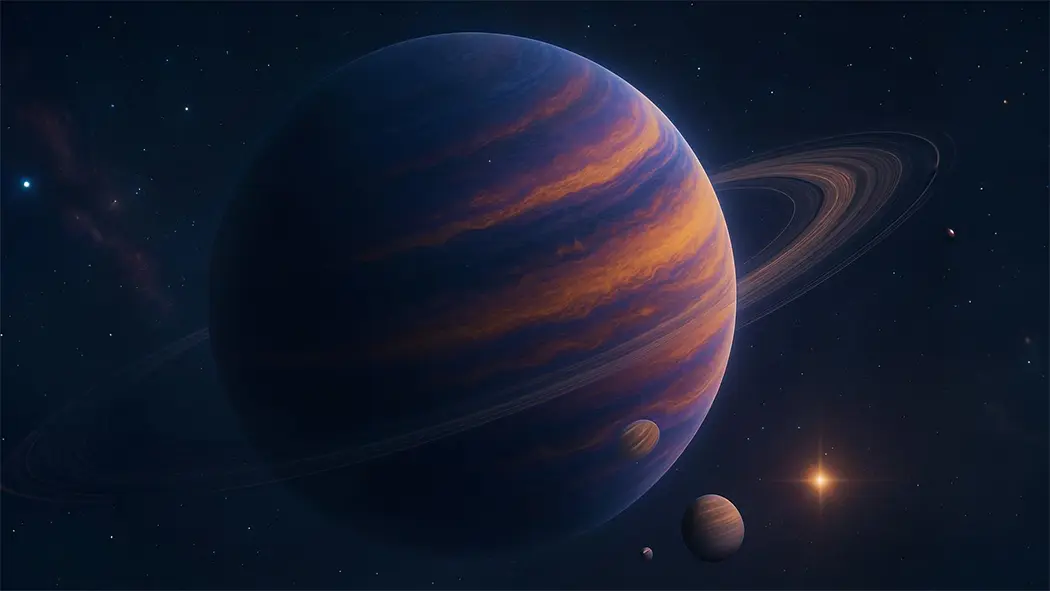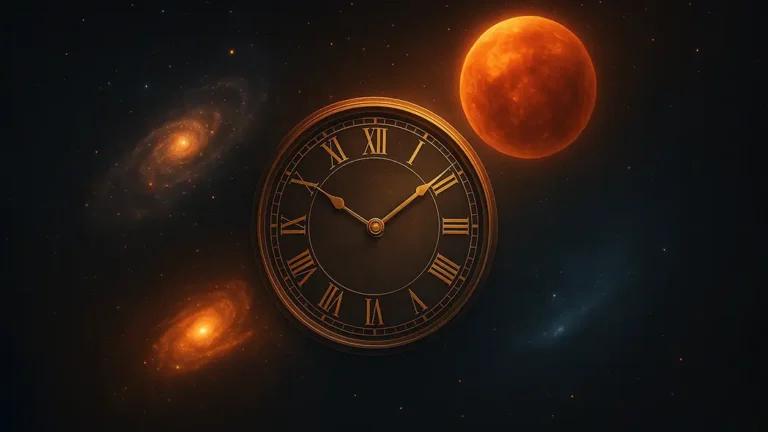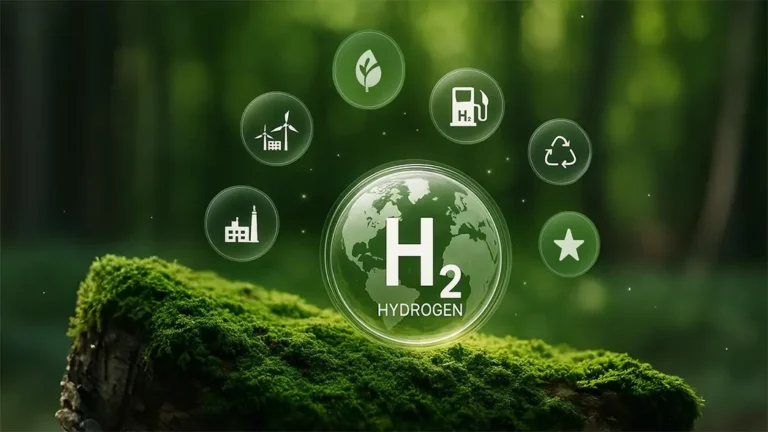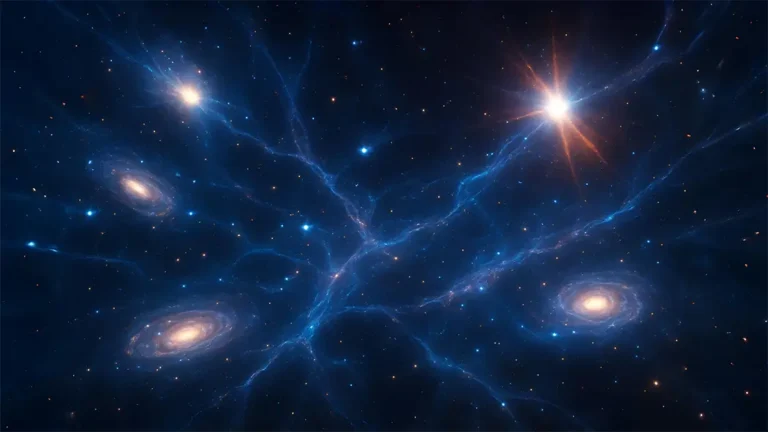When we think of big planets, Jupiter comes to mind. It is the largest planet in our solar system. But is it the largest planet in the universe? The answer is no. There are planets outside our solar system that are even bigger. These planets are called exoplanets. They orbit stars far away from us. Some of them are massive—much bigger than Jupiter.
In this post, we will explore what we know about the largest planet in the universe. We will also look at how scientists find these planets and what makes some of them so huge.
What Does “Largest Planet” Mean?
Before we name the biggest planet, we need to ask an important question. What do we mean by the largest planet? Are we talking about size or mass?
- Size means how wide a planet is from one end to the other. This is called diameter.
- Mass means how much matter is in the planet. A planet with more mass is heavier.
Some planets may be bigger in size but lighter in weight. Others may be smaller but very heavy. In this post, we will focus on size. We want to know which planet is the widest. So, the largest planet in the universe may not be the heaviest.
Jupiter: The Largest Planet in Our Solar System
Let’s start close to home. Jupiter is the largest planet in our solar system.
- Diameter: about 143,000 kilometers (about 89,000 miles)
- Mass: about 318 times more than Earth
- Volume: over 1,300 times greater than Earth
Jupiter is made mostly of gas. It has no solid surface like Earth. Its size is so big that all other planets in our solar system could fit inside it.
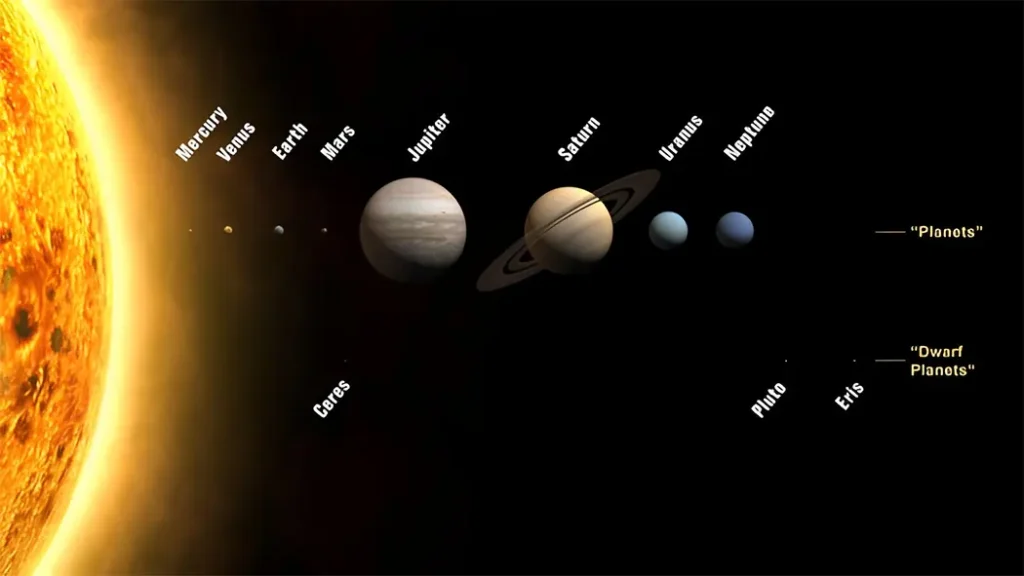
But even Jupiter has limits. There are planets outside our solar system that are even larger.
Exoplanets: Searching for the Largest Planet in the Universe
Exoplanets are planets that orbit stars outside our solar system. Thousands have been found so far. Some are small like Earth. Others are gas giants like Jupiter. A few are so big that they break all size records. Some of these exoplanets are the size of small stars. These are the worlds we look at when asking about the largest planet in the universe.
Most of the largest known planets are gas giants. They are made of hydrogen and helium. These gases take up a lot of space. That’s why these planets can grow very large.
WASP-17b: The Largest Planet Ever Discovered (So Far)
WASP-17b is one of the biggest planets ever found. It is about twice the size of Jupiter. That means if you placed WASP-17b next to Jupiter, it would look huge.
WASP-17b is huge in size but not very heavy. It is a “puffy” planet. It has a lot of gas but not much mass. It is like a balloon: big in size but not very dense. Scientists think this is because it is very close to its star. The heat from the star makes the planet’s gases expand.
This planet is also very strange. It orbits its star backward. This is not common. Most planets orbit in the same direction as their stars spin. WASP-17b goes the other way.
Could HD 100546 b Be the Largest Planet in the Universe?
HD 100546 b might be even larger than WASP-17b. It could be 6.9 times wider than Earth and 20 times heavier than Jupiter.
But scientists are not sure if it is a planet or a young star. It is still forming. If it turns out to be a planet, it could take the title of the largest planet in the universe.
Why Are Some Planets So Large?
There are a few reasons why some planets grow so large:
1. Heat from their star
Many large planets orbit very close to their stars. The heat makes their gases expand. This makes them appear bigger.
2. Low gravity
Some planets have low gravity on the surface. This allows their gases to spread out more.
3. Young age
Some giant planets are still forming. They are not fully compact yet. Over time, they may shrink.
4. Made of light gases
Most large planets are made of hydrogen and helium. These gases are light but take up a lot of space.
Is There a Limit to How Big a Planet Can Be?
Yes, there is a limit. If a planet gets too big, it becomes something else. It turns into a brown dwarf.
A brown dwarf is not a planet. It is not a star either. It is something in between. It is too heavy to be a planet but not heavy enough to start burning like a star.
The line between a big planet and a small brown dwarf is still debated. Most scientists say the limit is about 13 times the mass of Jupiter. Beyond that, the object is not a planet anymore. So the largest planet in the universe must be under that limit.
How Scientists Find the Largest Planets
Finding big planets far away is not easy. Scientists use special methods to detect them.
1. Transit Method
They watch for tiny dips in a star’s light. If a planet passes in front of the star, it blocks some light. This tells us the planet is there. This method also gives us the size of the planet.
2. Radial Velocity Method
A planet pulls on its star as it orbits. This causes the star to wobble. Scientists can measure this wobble to find the planet and its mass.
3. Direct Imaging
Sometimes, we can take pictures of planets. This works best for large, young planets that glow in infrared light.
4. Gravitational Microlensing
This uses the gravity of a star to bend light from another star behind it. If a planet is near, it adds a small extra effect. This tells us a planet is there.
Why Giant Planets Matter in Space Research
Studying giant planets helps us understand how planets form. It also shows us how different other solar systems can be.
Our solar system has gas giants, but they are far from the Sun. In other systems, gas giants may orbit very close to their stars. This changes how the whole system works.
Large planets can also affect smaller planets nearby. Their strong gravity can move other planets, or even throw them out of the system.
Can the Largest Planet in the Universe Support Life?
Most giant planets are not good places for life. They have no solid surface. The pressure deep inside them is too high. They are also made of gas, not rock.
But giant planets can have moons. Some of these moons might have the right conditions for life. For example:
- Europa, a moon of Jupiter, has a liquid ocean under its ice.
- Enceladus, a moon of Saturn, has water jets shooting into space.
If a giant planet has moons like these, life might be possible there.
So even if the largest planet in the universe cannot support life, its moons might.
Quick Summary
- Jupiter is the largest planet in our solar system.
- WASP-17b is the largest planet discovered so far in terms of size.
- HD 100546 b could be even larger, but it is still forming.
- Giant planets form from gas and dust around stars.
- If a planet is too big, it becomes a brown dwarf.
- Scientists use light and movement to find big planets.
- Some moons of giant planets might support life.
Final Thoughts
So, what is the largest planet in the universe?
Right now, planets like WASP-17b and HD 100546 b are some of the biggest we know. They are far larger than Jupiter. But they are not very heavy.
Science is always moving forward. As we discover more planets, we may find one even larger. The universe is huge, and we have only just started exploring it.
For now, WASP-17b may hold the title of the largest known planet by size. But who knows? The next record-breaker might be out there, just waiting to be found.
